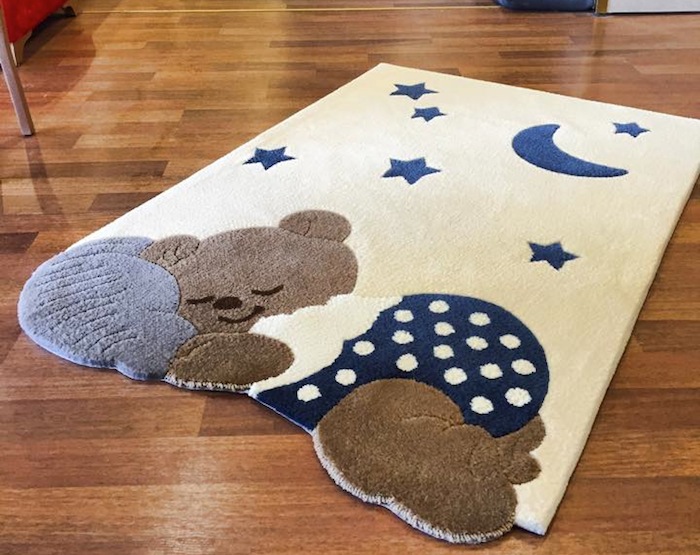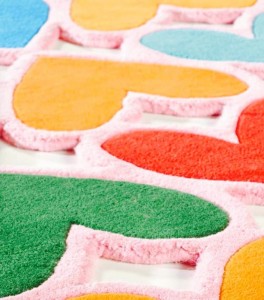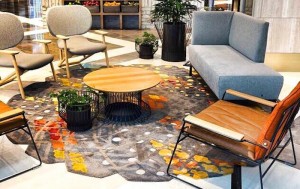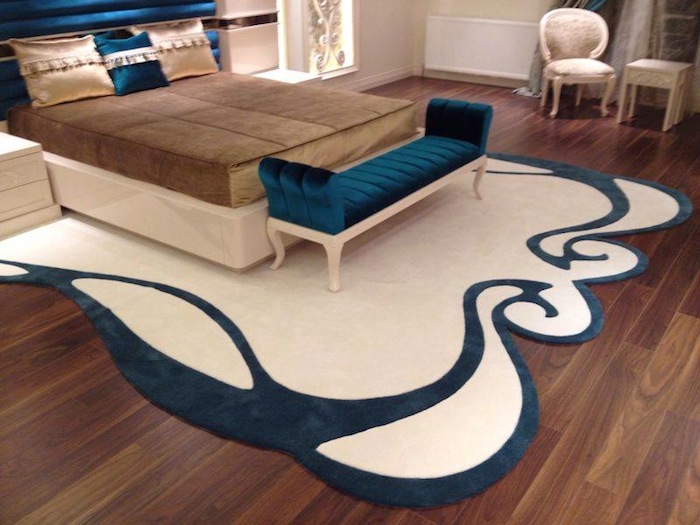
Choosing the right type of carpet for your home can be quite a hard task… Especially if you have many options to choose from, selecting one that matches your wants and needs might not be that easy. Therefore in this article, we publish some helpful information that you should read before carpet shopping.
First of all it’s important to know where the new carpeting will be installed in your home. If it’s a place with lots of activities or high traffic, like hallways or family rooms, you should get a durable type of carpet. You can use a pad which will result in greater comfort and aid in durability.
 Another important fact depends on the house members. If you have a pet living in the house, you’ll need carpet with high stain resistance.
Another important fact depends on the house members. If you have a pet living in the house, you’ll need carpet with high stain resistance.
Ounce weight is the biggest factor in determining the cost of carpet. A lower ounce weight will affect thickness and softness. Durable fibers, such as nylon and polyester, normally are priced higher but you get better carpet for your money.
You should pay attention to the warranty coverage and check whether your carpet has stain warranties, wear warranties of up to 25 years and lifetime installation warranties.
It’s also important which fiber does the carpet have because different fibers react to wear and tear in varying degrees and it helps to understand each type of fiber and what they offer in terms of durability, stain resistance and fading. There are five primary carpet fibers that comprise most carpet types:
 Nylon: The most popular fiber that is also the strongest and most durable
Nylon: The most popular fiber that is also the strongest and most durable
Polyester: Offers superior stain and fade resistance while delivering vibrant coloration
Triexta: Comprised of 39 percent corn sugars, which translates to extreme softness
Olefin: Least expensive carpet fiber that repels UV rays
Wool: The premier carpet fiber with excellent durability and a soft, luxurious feel
While making a decision for the right carpet, you will also need to know about the type of the carpet. Carpet can be grouped into three primary constructions; loop pile, cut pile, and cut and loop pile. Each of these construction types may be used in the home; although cut piles represent the largest market share for residential carpet. Loop pile carpets, such as berber have been increasing in popularity over the past 10 years. Cut and loops represented a significant portion of carpet sales during the 1970s and 1980s, but cut and loop usage has been reduced considerably. There are four main carpet types to choose from:
Texture (Saxony/Cut Pile): This is a cut pile carpet in which two or more plies of yarn have been twisted and heat-set so that the tip of each carpet tuft is distinguishable on the pile surface. Saxonies have the tendency to show footprints and vacuum cleaner sweeper marks. This is based in light reflection of the fiber when pile direction is changed. When brushed in one direction, the pile may assume a darker hue, while adjacent yarns brushed in the opposite direction may present a lighter hue. When viewed in the opposite direction, color hues of darker areas will appear lighter. Offers a smooth surface and traditional look. Great for high-traffic areas such as living rooms and hallways.
| Twist (Frieze): A true frieze carpet is similar to a texture in that footprints and vacuum cleaner marks are disguised. The textured appearance is acquired by placing a high twist level on the plied yarns. This high twist level causes the tuft to twist back upon itself providing a kinked appearance. In general terms, higher twist levels provide enhanced performance characteristics, when compared to lower twist products with the same construction attributes. True frieze carpet styles tend to be more costly because of higher costs of production and they may not provide the same perceived value as lower twist, textured products. Delivers a modern, casual and stylish look with great durability. Recommended for bedrooms, sitting rooms and media rooms. |
|
Loop (Berber): All carpet actually begins as a loop pile and the loops are cut during manufacturing to provide the cut pile appearance. As the name implies, cut and loops are a combination of cut loops and uncut loops to provide texture or patterns. Most cut and loops are primarily cut piles with some loops left uncut for patterns; although a few styles utilize the opposite effect. Provides maximum durability for active family rooms and high-traffic areas, such as recreation rooms, basements and workout rooms.
Pattern (Cut & Loop / Sculptured): Offers distinctive looks with patterns for a stunning visual impact. Recommended for formal rooms, dining rooms and basements. |


